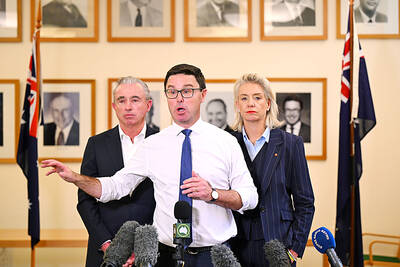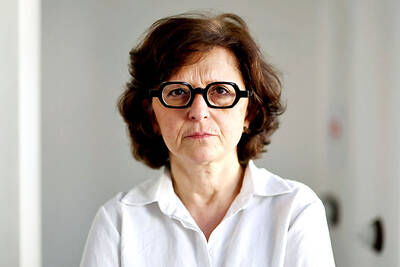Their heads are too large or too small, their limbs too short or too bent. For some, their brains never grew, speech never came and their lives are likely to be cut short: these are the children it appears that India would rather the world did not see, the victims of a scandal with potential implications far beyond the country’s borders.
Some sit mutely, staring into space, lost in a world of their own; others cry out, rocking backwards and forwards. Few have any real control over their own bodies. Their anxious parents fret over them, murmuring soft words of encouragement, hoping for some sort of miracle that will free them from a nightmare.
Health workers in the Punjabi cities of Bathinda and Faridkot knew something was terribly wrong when they saw a sharp increase in the number of birth defects, physical and mental abnormalities, and cancers. They suspected that children were being slowly poisoned.
But it was only when a visiting scientist arranged for tests to be carried out at a German laboratory that the true nature of their plight became clear. The results were unequivocal. The children had massive levels of uranium in their bodies, in one case more than 60 times the maximum safe limit.
The results were both momentous and mysterious. Uranium occurs naturally throughout the world, but is normally only present in low background levels that pose no threat to human health. There was no obvious source in the Punjab that could account for such high levels of contamination.
And if a few hundred children — spread over a large area — were contaminated, how many thousands more might also be affected? Those are questions the Indian authorities appear determined not to answer. Staff at the clinics say they were visited and threatened with closure if they spoke out. The South African scientist whose curiosity exposed the scandal says she has been warned by the authorities that she may not be allowed back into the country.
But investigation has now uncovered disturbing evidence to suggest a link between the contamination and the region’s coal-fired power stations. It is already known that the fine fly ash produced when coal is burned contains concentrated levels of uranium and a new report published by Russia’s leading nuclear research institution warns of an increased radiation hazard to people living near coal-fired thermal power stations.
The test results for children born and living in areas around the state’s power stations show high levels of uranium in their bodies. Tests on ground water show that levels of uranium around the plants are up to 15 times the WHO’s maximum safe limits. Tests also show that it extends across large parts of the state, which is home to 24 million people.
The findings have implications not only for the rest of India — Punjab produces two-thirds of the wheat in the country’s central reserves and 40 percent of its rice — but for many other countries planning to build new power plants, including China, Russia, India, Germany, Britain and the US.
The victims are being treated at the Baba Farid centers for special children in Bathinda — where there are two coal-fired thermal plants — and in nearby Faridkot. It was staff at those clinics who first voiced concerns about the increasing numbers of admissions involving severely handicapped children. They were being born with hydrocephaly, microcephaly, cerebral palsy, Down’s syndrome and other complications. Several have already died.
Pritpal Singh, who runs the Faridkot clinic, said the numbers of children affected by the pollution had risen dramatically in the past six or seven years. But he said that the Indian authorities appeared determined to bury the scandal.
“They can’t just detoxify these kids, they have to detoxify the whole Punjab. That is the reason for their reluctance,” he said. “They threatened us and said if we didn’t stop commenting on what’s happening, they would close our clinic. But I decided that if I kept silent it would go on for years and no one would do anything about it. If I keep silent then the next day it will be my child. The children are dying in front of me.”
Carin Smit, the South African clinical metal toxicologist who arranged for the tests to be carried out in Germany, said that the situation could no longer be ignored.
“There is evidence of harm for these children in my care and ... it is an imperative that their bodies be cleaned up and their metabolisms be supported to deal with such a devastating presence of radioactive material,” she said. “If the contamination is as widespread as it would appear to be — as far west as Muktsar on the Pakistani border, and as far east as the foothills of Himachal Pradesh — then millions are at high risk and every new baby born to a contaminated mother is at risk.”
India’s reluctance to acknowledge the problem is hardly unexpected: the country is heavily committed to an expansion of thermal plants in Punjab and other states. Neither was it any surprise when a team of scientists from the Department of Atomic Energy visited the area and concluded that while the concentration of uranium in drinking water was “slightly high,” there was “nothing to worry” about. Yet some tests recorded levels of uranium in the ground water as high as 224mcg/l (micrograms per liter) — 15 times higher than the safe level of 15mcg/l recommended by the WHO. The US Environmental Protection Agency sets a maximum safe level of 20mcg/l.
Tests on ground water in villages in Bathinda district found the highest average concentration of uranium — 56.95mcg/l — in the town of Bucho Mandi, a short distance from the Lehra Mohabat ash pond. Such a concentration of uranium means the lifetime cancer risk in the village was more than 153 times higher than in the normal population. Tests on ground water in the village of Jai Singh Wala, close to the Bathinda ash pond, showed an average level of 52.79mcg/l. People living there said they used the ash to spread on the roads and even on the floors of their homes.
Scientists in Punjab who have studied the presence of uranium in the state have dismissed the government denials as a whitewash.
“If the government says there is a high level of uranium in an area that would create havoc — they don’t want to openly say something like that,” said Chander Parkash, a wetland ecologist working at Guru Nanak Dev University, Amritsar.
Both he and Surinder Singh, who works at the same university and has also carried out tests on the state’s ground water, said it was clear that uranium was present in large quantities and should be investigated further.
A previous report in the magazine Scientific American, citing various sources, claimed that fly ash emitted by power plants “carries into the surrounding environment 100 times more radiation than a nuclear power plant producing the same amount of energy,” adding: “When coal is burned into fly ash, uranium and thorium are concentrated at up to 10 times their original levels.”

BACKLASH: The National Party quit its decades-long partnership with the Liberal Party after their election loss to center-left Labor, which won a historic third term Australia’s National Party has split from its conservative coalition partner of more than 60 years, the Liberal Party, citing policy differences over renewable energy and after a resounding loss at a national election this month. “Its time to have a break,” Nationals leader David Littleproud told reporters yesterday. The split shows the pressure on Australia’s conservative parties after Prime Minister Anthony Albanese’s center-left Labor party won a historic second term in the May 3 election, powered by a voter backlash against US President Donald Trump’s policies. Under the long-standing partnership in state and federal politics, the Liberal and National coalition had shared power

CONTROVERSY: During the performance of Israel’s entrant Yuval Raphael’s song ‘New Day Will Rise,’ loud whistles were heard and two people tried to get on stage Austria’s JJ yesterday won the Eurovision Song Contest, with his operatic song Wasted Love triumphing at the world’s biggest live music television event. After votes from national juries around Europe and viewers from across the continent and beyond, JJ gave Austria its first victory since bearded drag performer Conchita Wurst’s 2014 triumph. After the nail-biting drama as the votes were revealed running into yesterday morning, Austria finished with 436 points, ahead of Israel — whose participation drew protests — on 357 and Estonia on 356. “Thank you to you, Europe, for making my dreams come true,” 24-year-old countertenor JJ, whose

NO EXCUSES: Marcos said his administration was acting on voters’ demands, but an academic said the move was emotionally motivated after a poor midterm showing Philippine President Ferdinand Marcos Jr yesterday sought the resignation of all his Cabinet secretaries, in a move seen as an attempt to reset the political agenda and assert his authority over the second half of his single six-year term. The order came after the president’s allies failed to win a majority of Senate seats contested in the 12 polls on Monday last week, leaving Marcos facing a divided political and legislative landscape that could thwart his attempts to have an ally succeed him in 2028. “He’s talking to the people, trying to salvage whatever political capital he has left. I think it’s

A documentary whose main subject, 25-year-old photojournalist Fatima Hassouna, was killed in an Israeli airstrike in Gaza weeks before it premiered at Cannes stunned viewers into silence at the festival on Thursday. As the cinema lights came back on, filmmaker Sepideh Farsi held up an image of the young Palestinian woman killed with younger siblings on April 16, and encouraged the audience to stand up and clap to pay tribute. “To kill a child, to kill a photographer is unacceptable,” Farsi said. “There are still children to save. It must be done fast,” the exiled Iranian filmmaker added. With Israel